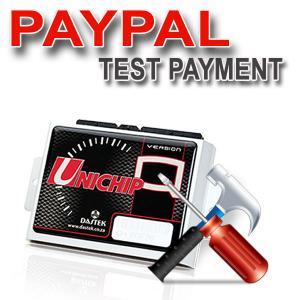How To – Unichip Map Names
Unichip Map Names – What do they mean?
Each Unichip gets programmed with 1, 2 or 5 different maps, it all depends on what you order with your plug and play kit. Most plug and play kits come with a 2 way map selection switch in which case the Unichip will be pre programmed with 2 maps. If you upgrade to a 5 way map select switch or the NEW Flux 2 your Unichip will be programmed with 5 maps.
Now the big question is which map is which? To explain this lets go back to the dyno. When the vehicle is tuned for the first time it would be tuned for MAX horse power at full throttle and best fuel economy at part throttle, this should be the optimal map and the best map to use. The map would have optimized fuel and timing tables, on a normal aspirated vehicle. If you have a turbo you can also modify the boost map.
With the Unichip you have the option to program it with 5 maps, typically this would be variations of your optimal map which was created on the dyno.
Lets say in your optimal map that you had to add 5 degrees of timing to get the MAX horsepower and the fuel map had to be leaned out to get the Air to Fuel ratio spot on because the vehicle was running to rich which is typical. Now we just create more maps based on the original map. Each map will still be tested and tuned on the dyno.
Typically the Unichip have a label on the back indicating which maps your Unichip shipped with, it would look something like this:
Map 1 = 87 octane (will have a minus (-) sign after the map)
Map 2 = 91 octane
Map 3 = 93 octane (will have a plus (+) sign after the map name
Map 4 = Valet
Map 5 = Immobilizer
Here is a breakdown of what these maps mean and how they are different:
Map 1 = 87 octane (Original optimal map – with zero timing in the timing map, fuel map stays the same).
Map 2 = 91 octane (Original optimal map – no changes to timing or fuel map).
Map 3 = 93 octane (Original optimal map – with 2 or 3 degrees more timing, fuel map stays the same).
Map 4 = Valet (Original optimal map – with rev limiter set to 3000 rpm, fuel map could be leaned out).
Map 5 = Immobilizer (Original optimal map – with incorrect crank style to prevent the vehicle from starting).
You can also create your own maps if you have the Unichip Tuning software and change the maps around in any order you want which could look something like below:
Map 1 = Original optimal map – with zero timing in the timing map, fuel map stays the same.
Map 2 = Original optimal map – with 2 or 3 degrees less timing, fuel map stays the same.
Map 3 = Original optimal map – no changes
Map 4 = Original optimal map – with 2 or 3 degrees more timing
Map 5 = Original optimal map – with 5 degrees more timing
If you have a turbo, water injection, road peed or what ever tickles your fancy you can create any map combination to fit your needs.
In the example below we have the Unichip doing closed loop boost control with different boost levels. It could look something like below.
Map 1 = Closed loop boost control – 8 psi
Map 2 = Closed loop boost control – 10 psi
Map 3 = Closed loop boost control – 12 psi
Map 4 = Closed loop boost control – 14 psi
Map 5 = Closed loop boost control – 16 psi
In the example above the Unichip would be setup to automatically correct the timing and fuel maps based on the boost.
Below is another example of what the maps could be named, as long as you know what they mean and the maps description match what the Unichip is actually doing you should be good to go.
Map 1 = 87 octane – Mild tune
Map 2 = 91 octane – Semi Mild tune
Map 3 = 93 octane – Optimal tune
Map 4 = 100 octane – Aggressive tune
Map 5 = 105 octane – Very Aggressive tune




